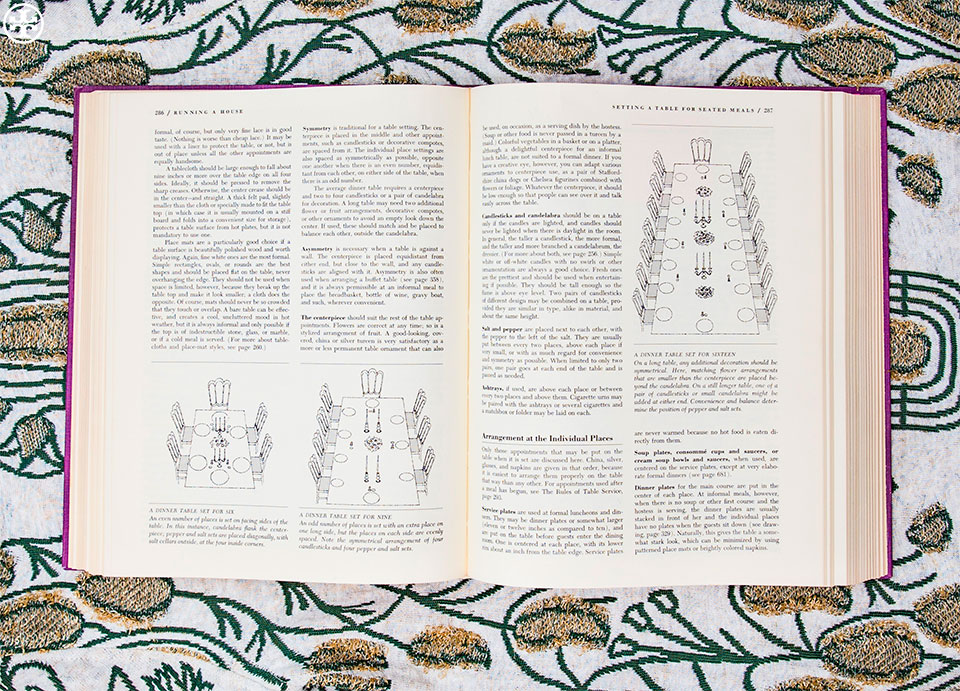
The dos and don’ts of dinner-party table arrangements, excerpted from the 1969 edition of Vogue’s Book of Etiquette and Good Manners
A dining table should be an adequate size to accommodate comfortably the number of people to be seated. The best spacing at a rectangular or square table is 18 inches from the corner to the center of the first dinner plate, and two feet from the center of one dinner plate to the center of the next. Anything less can be extremely awkward if the food is to be served by a maid, because there will be insufficient room to present the dishes unless guests lean to one side. When setting a table, its legs should always be taken into account and the places arranged so that no one (particularly a guest) will have to straddle a leg.
Tablecloth
A tablecloth should be large enough to fall about nine inches or more over the table edge on all four sides. Ideally, it should be pressed to remove the sharp creases. Otherwise, the center crease should be in the center — and straight. A thick felt pad, slightly smaller than the cloth or specially made to fit the table top (in which case it is usually mounted on a stiff board and folds into a convenient size for storage), protects a table surface from hot plates, but it is not mandatory to use one.
Symmetry
Symmetry is traditional for a table setting. The centerpiece is placed in the middle and other appointments, such as candlesticks or decorative compotes, are spaced from it. The individual place settings are also spaced as symmetrically as possible, opposite one another when there is an even number, equidistant from each other, on either side of the table, when there is an odd number.
Asymmetry
Asymmetry is necessary when a table is against a wall. The centerpiece is placed equidistant from either end, but close to the wall, and any candlesticks are aligned with it. Asymmetry is also often used when arrangement a buffet table, and it is always permissible at an informal meal to place the breadbasket, bottle of wine, gravy boat and such, wherever convenient.
Centerpiece
The centerpiece should suit the rest of the table appointments. Flowers are correct at any time; so is a stylized arrangement of fruit. A good-looking, covered china or silver tureen is very satisfactory as a more or less permanent table ornament that can also be used, on occasion, as a serving dish by the hostess. (Soup or other food is never passed in a tureen by a maid.) Colorful vegetables in a basket or on a platter, although a delightful centerpiece for an informal lunch table, are not suited to a formal dinner. If you have a creative eye, however, you can adapt various ornaments to centerpiece use, as a pair of Staffordshire china dogs or Chelsea figurines combined with flowers or foliage. Whatever the centerpiece, it should be low enough so that people can see over it and talk easily across the table.
